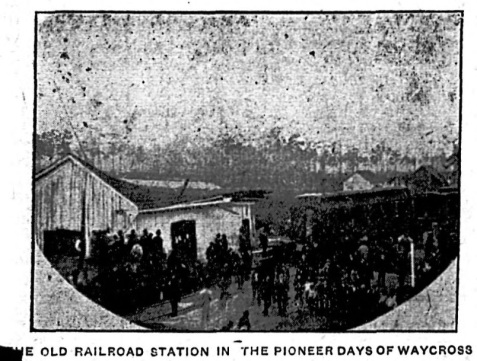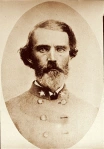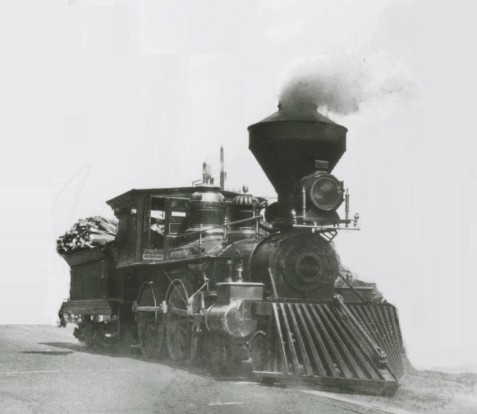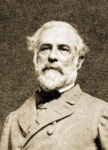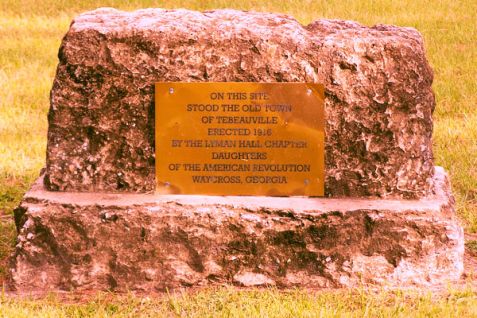Georgia Militia Called Out in the War of 1812
Etheldred “Dred” Newbern, a pioneer settler of Berrien County, GA, was a veteran of the War of 1812. His service in the Georgia Militia is documented in War of 1812 Pension and Bounty Land Warrant Application Files. Newbern and other men in his district were mustered into Captain Peter Cone’s Company of Georgia Militia in the spring of 1814. The company rendezvoused with Captain Cone at Paramore Hill in Liberty County, GA, and marched 80 miles to Savannah, GA.
Bowling’s Detachment
At Savannah, Cone’s Company was placed into Major Robert Bowling’s Detachment of the 8th Infantry Regiment, United States Army, along with companies led by Captain David Clarke and Captain Roger L. Gamble. A compilation of War Department records in the National Archives informs a reconstructed roster of 255 men assigned to Bowling’s Detachment.
In this series:
- Etheldred Dryden Newbern: War of 1812
- Etheldred Dryden Newbern: Rendezvous of the Georgia Militia
- Etheldred Dryden Newbern: March to Sunbury
To Sunbury, GA
About April 10, 1814 Major Bowling formed up his unit at Savannah for the march to their assigned duty station at the port of Sunbury, GA. From Savannah, the land route to Sunbury was by way of the Post Road, which ran from Savannah to Darien via Midway.
Bowling’s Detachment started the 50 mile march with their complement of officers, non-commissioned-officers and soldiers, company musicians, artificers (combat engineers), and African-American “servants.” Private Lewis Green, disabled from an injury sustained while the company was quartered in Savannah, rode on one of the two wagons transporting the detachment’s baggage.
Bryan Church
About three miles south of Savannah, the post road passed by Bryan Church, the meeting house of the only congregation of enslaved African-Americans in Georgia and perhaps the first such congregation in all of North America. April 10, 1814 was Easter Sunday, but that was of little consequence as Easter was not celebrated in America until after the Civil War. If Bowling’s troops passed the church that morning, we can only wonder what the black congregation and the white militia men with their enslaved black servants might have thought of each other.

Kings Ferry
Eighteen miles south of Savannah, the troops reached Kings Ferry over the Ogeechee River. The name of the river came from the language of the native Creek people and is thought to mean “river of the Uchees”, referring to the Yuchi tribe who inhabited areas near it. The Creeks of Georgia also had a name for the white settlers – the “Ecunnaunuxulgee” – meaning those “people greedily grasping after the lands of red people” (Wunder, 2000.) In April, when Bowling’s Detachment crossed on the ferry, the Ogeechee Tupelo trees (Nyssa ogeche) lining the river were in full bloom. The small white blossoms are highly attractive to bees, and their nectar is the source of the renowned Tupelo honey. The tree is commonly referred to as Ogeechee Lime, on account of the acidic juice derived from its fruit which can serve as a substitute for lime juice.

As Bowling’s Detachment approached the ferry, the thoughts of the men no doubt turned to the American victory over the British there in 1779, when Casimir Pulaski and his Legion caught up with the loyalist Lt. Col. Daniel McGirth (also known as McGirt) and his band of outlaw raiders. Pulaski’s Patriots captured 50 Loyalists, their livestock and enslaved people. In another incident, the slippery McGirth narrowly escaped death at the hands of William Cone, grandfather of Levi J. Knight, pioneer settler of Ray City, GA.
Midway Church
Another 15 miles march to the south brought Bowen’s Detachment to Midway Church, which during the American Revolution had been a hot bed of rebel dissenters. The British had burned the church in 1778, but it was rebuilt, with the construction of the present church completed in 1792. A U-shaped balcony in the interior was used to seat African American worshipers who were enslaved by the white congregation.

From Midway, the detachment could take Sunbury Road toward the coast. Sunbury Road, “one of the longest vehicular thoroughfares of post-Revolutionary Georgia,” ran 200 miles from the port city to the state capitol at Milledgeville, GA (LibertyCounty.org).
Sunbury, GA
The site of Sunbury was idyllic. James Oglethorpe visited the locality in 1734 where he saw “a bold and beautiful bluff, which overlooking the placid waters of the Midway river and the intervening low-lying salt marshes, descries in the distance the green woods of Bermuda Island [now known as Colonels Island], the dim outline of the southern point of Ossabaw, and across the sound, the white shores of St. Catherine.” Dr. James Holmes (1804-1883), a native of Sunbury, observed, “In its palmy days, Sunbury was a beautiful village with its snow-white houses, green blinds, and a red roof here and there. From the fort to the point was a carpet of luxuriant Bermuda grass shaded with ornamental trees on either side of its wide avenues.“

Sunbury “once rivaled Savannah as the major seaport in this area. By all geological rights it should have been what Savannah became; after all, it is the deepest natural harbor east of the Mississippi. It has direct access to the ocean with its necessary winds, much shorter to get to from the high seas, while Savannah offered only a winding, often difficult silted river to navigate” (LibertyCounty.org). Sunbury was once the home port to 94 sailing ships; “The main resources shipped from Sunbury were lumber, rice, turpentine, and animal skins, which sailed to ports around the Atlantic, mainly in the Caribbean but also to England, the northern colonies, and even main land Spanish ports” (Dilk, S.D.) Button Gwinnett (1735-1777) and Lyman Hall (1724-1790), signers of the Declaration of Independence, had been citizens of Sunbury.
As a military post, Sunbury had played its role in the War of Jenkins’ Ear (1739 to 1748), the French and Indian War (1754–1763), and the American Revolution (1775–1783). At the beginning of the American Revolution, a fort had been built at Sunbury to guard the port and St. John’s Parish; Fort Morris was a low enclosed earthwork in the shape of a quadrangle. Surrounded by a parapet and moat, Fort Morris contained a parade ground of about one acre. The fort had been defended by more than 25 pieces of ordnance of various caliber. Fort Morris and Sunbury were attacked by the British in 1779 and captured after a single day of battle. During the years following the Revolution, the fort fell into disrepair.
In the War of 1812, Sunbury, like Georgia’s other ports, was yet again under threat from the British Fleet. For years leading up to the war, the U.S. War Department had contemplated the placement of gun batteries to defend Sunbury. But the State of Georgia failed to grant any land for a site and the federal government had been unable to secure ownership of suitable land for such defenses.
Naval Defense
To allay the imminent threat of British attack, in early 1812 the US Navy sent six armed boats built at Charleston to Sunbury, Georgia. The design of these small gunboats is uncertain. They may have been row galleys similar to those built in 1813 at the Washington Navy Yard by naval architect William Doughty, about 50 feet in length and 12 feet in the beam, with a depth of 3 feet, 6 inches. Sunbury resident John Stevens recalled “it was a beautiful sight of a clear day to see them sailing down to the sound and back again.” At least some of the American gunboat fleet were sloop-rigged for sailing, such as Gunboat No. 68, which at times escorted American merchantmen crossing St. Catherine’s Sound off of Sunbury.
At Charleston, these boats had been commanded by white officers and manned by a crew of enslaved black sailors, typical of “the common use of slaves in maritime pursuits in the South.” But the US Navy Commander at Charleston wrote, “They are slaves belonging to this port… and not to be taken out of the State [of South Carolina].” (The Naval War of 1812, Volume 1, Chapter 2). The experienced African-American sailors were replaced with white crews pressed into service.
The gunboat officers and their new crews were ill-qualified as sailors. At Sunbury, discipline was non-existent and the navy men frequently deserted. The little fleet was struck by sickness and death. One sailor’s hand was blown off when his gun exploded while he was “firing at negro hutts in a drunken frolic.” Another man was killed in a brawl. The boats were short of gunpowder and equipment. “After six months on station with little or no supplies, the barges and their crews departed from Sunbury” (Smith, G. J., 1997). Historian Gerald Smith observed, “Unfortunately for the government and the people of Sunbury, the expedition came to a disappointing end because of poor planning, negligent leadership, and a serious lack of supplies. The failure of the Sunbury expedition left the Georgia coast open for British attack.” (New Georgia Encyclopedia)
Now it was up to the Georgia Militia and men like Dred Newbern to defend the port of Sunbury.
- Etheldred Dryden Newbern: War of 1812
- Etheldred Dryden Newbern: Rendezvous of the Georgia Militia
- Etheldred Dryden Newbern ~ Pioneer Settler
- Martha Guthrie: Babe of the Indian Wars





























